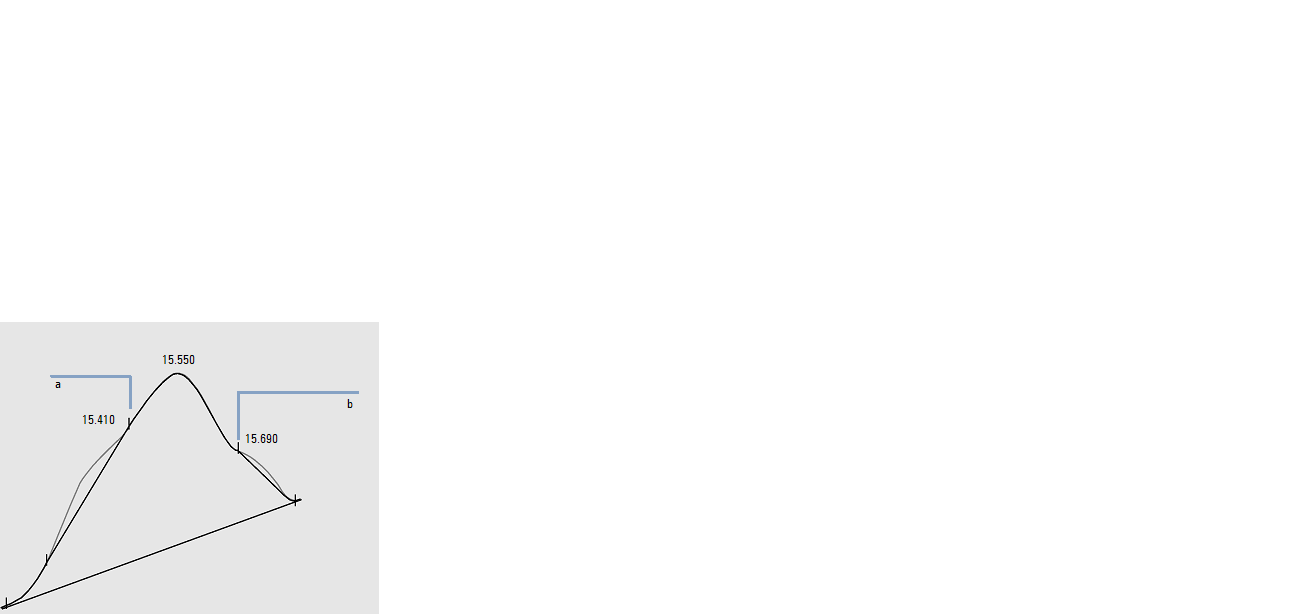Shoulders
Shoulders are unresolved peaks on the leading or trailing edge of a larger peak. When a shoulder is present, there is no true valley in the sense of negative slope followed by positive slope. A peak can have any number of front and/or rear shoulders.
Shoulders are detected from the curvature of the peak as given by the second derivative. When the curvature goes to zero, the integrator identifies a point of inflection, such as points a and b in Peak Shoulders.
-
A potential front shoulder exists when a second inflection point is detected before the peak apex. If a shoulder is confirmed, the start of the shoulder point is set at the maximum positive curvature point before the point of inflection.
-
A potential rear shoulder exists when a second inflection point is detected before the peak end or valley. If a shoulder is confirmed, the start of the shoulder point is set at the point of the first minimum of the slope after the peak apex.
Retention time is determined from the shoulder’s point of maximum negative curvature. With a programmed integration event, the integrator can also calculate shoulder areas as normal peaks with drop-lines at the shoulder peak points of inflection.
The area of the shoulder is subtracted from the main peak.
Peak shoulders can be treated as normal peaks by use of an integrator timed event.
